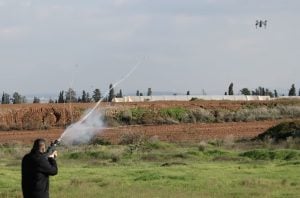Aspiring to join the National Defence Academy (NDA) or the Combined Defence Services (CDS) is a commendable ambition that demands dedication, resilience, and a comprehensive understanding of various aspects crucial for military leadership. Among the multitude of subjects that candidates must master, the significance of India’s physical features holds a pivotal place. These features encompass a diverse range of geographical elements such as mountains, rivers, plateaus, plains, and coastlines, each playing a vital role in shaping military strategies, national security, and socio-economic dynamics.
Here’s why a profound knowledge of India’s physical features is indispensable for NDA and CDS aspirants:
- Geopolitical Significance: India’s geographical location amidst the Indian Ocean in the south, the Arabian Sea in the west, and the Bay of Bengal in the east bestows upon it immense geopolitical importance. Understanding the strategic placement of natural barriers like the Himalayas in the north and the Thar Desert in the west is crucial for devising defensive and offensive military strategies.
- Border Security: India shares its borders with multiple countries, each with its unique geographical challenges. Familiarity with mountain ranges like the Himalayas, which serve as natural boundaries, and rivers like the Indus and Brahmaputra, acting as geopolitical demarcations, is indispensable for safeguarding territorial integrity and managing border disputes effectively.
- Climate and Terrain Adaptation: India’s diverse physical features contribute to a wide array of climates and terrains, ranging from alpine to desert, from tropical to temperate. Military operations often require adaptability to varying environments, and a thorough understanding of India’s geographical diversity prepares aspirants to navigate through diverse terrains with agility and efficiency.
- Disaster Management: The topographical diversity of India also exposes it to a multitude of natural disasters such as floods, earthquakes, cyclones, and landslides. As future officers in the armed forces, NDA and CDS aspirants must be equipped with the knowledge and skills to coordinate relief efforts, conduct rescue operations, and provide humanitarian assistance in times of crises.
- Resource Management: India’s physical features influence the distribution of natural resources, including water, minerals, and arable land. Understanding the geographical distribution of resources is essential for strategic planning, sustainable development, and ensuring national self-reliance in times of conflict or crisis.
- Transportation and Communication: The diverse terrain of India poses challenges to transportation and communication networks. Aspirants need to comprehend how geographical features such as rivers, mountains, and coastlines impact the deployment of troops, logistical support, and the establishment of effective communication systems during military operations.
- Cultural Understanding: India’s physical features have not only shaped its geography but also influenced its cultural landscape. Rivers like the Ganges hold religious significance, while mountain ranges like the Western Ghats harbor biodiversity hotspots. Understanding these cultural nuances fosters a deeper connection with the land and its people, crucial for effective leadership and community engagement.
In conclusion, a thorough understanding of India’s physical features is indispensable for NDA and CDS aspirants aspiring to serve their nation in the armed forces. Beyond being a subject of academic importance, this knowledge forms the bedrock of military leadership, strategic planning, and national security. By mastering the intricacies of India’s geographical diversity, aspirants can embark on their journey with a heightened sense of preparedness and a profound commitment to serve and protect their motherland.















